
“vivid colours, chiseled forms of rocks and mountains stand out in brilliant clearness, divested of any trace of vegetation, like the world on the first day of creation, when only heaven and earth were facing each other in the primal unity.”
by Govinda, Lama Anagarika from The Way of the White Clouds.
In search of the lost kingdom, the earliest European Jesuits entered the remote kingdom of Guge in 1642, and became the reason for it’s loss of existence.
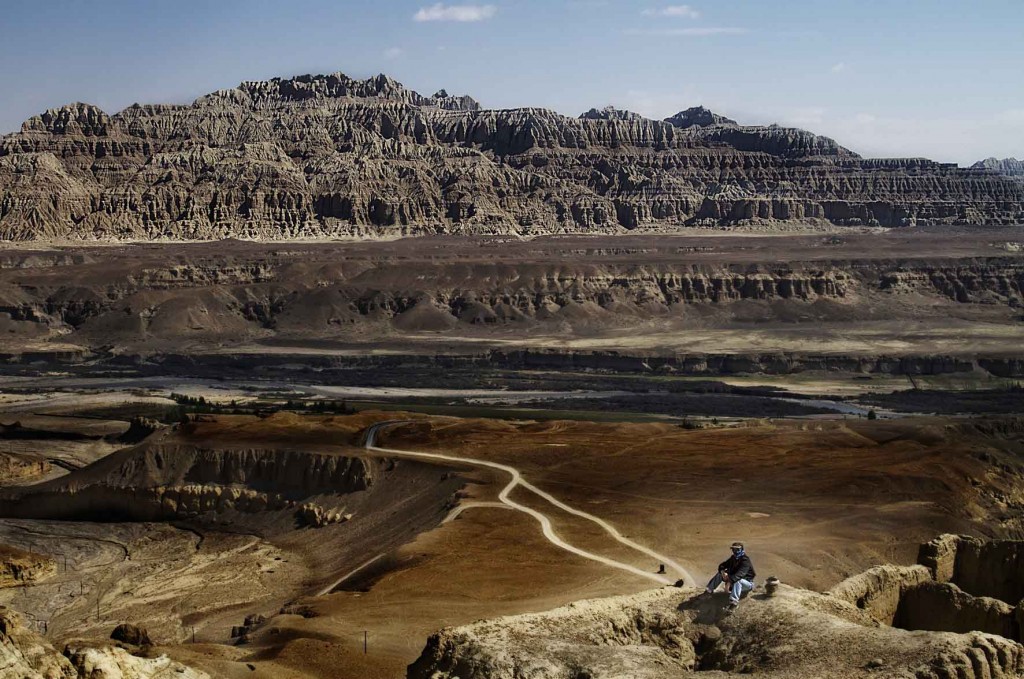
Picture : Guge kingdom at the banks of Sutlej river, nestled between rocky mountains.
Guge kingdom in the remote Ngari Prefecture of Western Tibet, on the banks of Sutlej river, lies close to the Indian state of Ladakh. It is a nine day drive from Lhasa, eight days from Kathmandu and also eight days from Kashgar (Xinjiang). The current political situation in Tibet prevents the regions access from India, though in the past a rich trade route existed between the two countries.
In the 10th century, Nyi Ma Mgon of Tibet, established the Guge kingdom in Western Tibet. Later he divided the vast kingdom into three parts, appointing his three sons as the rulers of Ladakh, Zanskar and Guge.
In mid 1600’s when the western Christian missionaries were expanding their footprint in India, there existed a belief that in the upper Himalayan region lies a place where Jesus Christ had lived after his resurrection. In search, two Portuguese Jesuits, Father Andrade and Father Marques, who were based in Goa (India), undertook a pilgrimage to Tibet with a group of Hindus pilgrims. On their arrival at the kings palace at Guge kingdom in Tsaparang, Tibet, the king received them with immense hospitality, permitting them to set up a church. The missionaries started propagating Christianity in this remote region of the plateau, which was viewed negatively by the Buddhists, who thereafter invited the king of Ladakh, the brother of King of Guge, to invade. The invasion by the king of Ladakh destroyed the kingdom of Guge, leaving behind the ghost remains of the residences and palaces of Tsaparang.
The search for the lost kingdom became the very reason for its destruction.
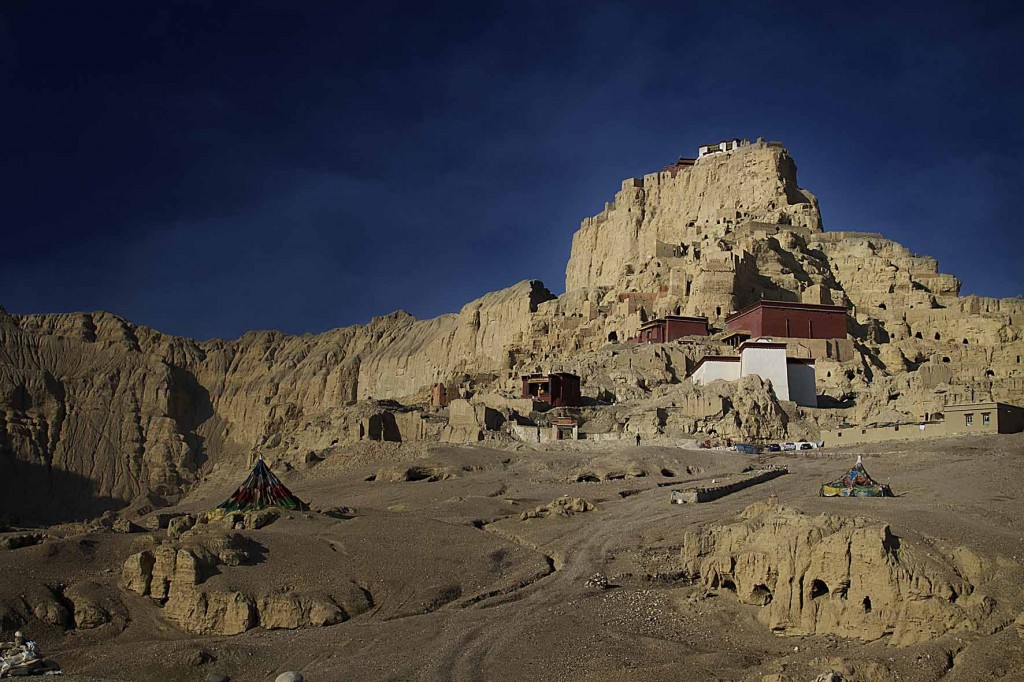
Picture : Tsaparang, the centre where lived over hundred families in the layered clay hill.
Tsaparang is a huge clay fortress, perched on a pyramid shaped rock rising about 500 feet, containing numerous tunnels and caves carved out of rocks. At the lowest layers lived the village commoners. The layer above was for temples and quarters of Buddhist monks. In the tunnels rising to the top of the hill, lived the members of the royal family. At the top in the open space, existed the royal palace.
At it’s peak, more than hundred families lived in the tunnels that were carved inside the rocky mountain.
A visit to the the tunnel city of Guge kingdom, leaves one appreciating the mechanism employed to lift water from the Sutlej river to the top of the Tsaparang clay structures, catering to the daily needs of many families living inside them.
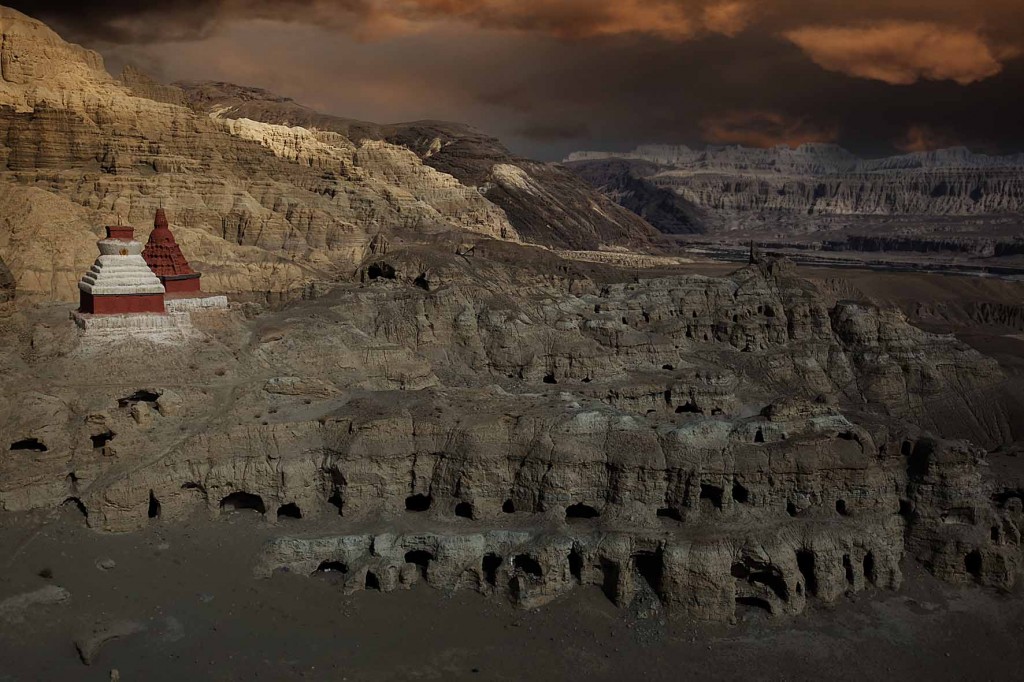
Picture : Lower levels of Tsaparang clay tunnels that were residence of common village men.
The people of Tsaparang believed in Tibetan Buddhism, though it also had a strong influence of Hinduism. The civilization was very open to different belief systems and this is reflected in the ancient murals in the temples that bring together the styles of Tibetan, Nepali Newari and Indian Kashmiri art forms. The murals show Hindu Tantric and Buddhist deities locked in yogic poses. Unfortunately many of these murals were destroyed during the Chinese revolution.
The remains of Tsaprang are a reminder of the Shangri-La that it may have once been.
In June 2012, our elder daughter and I visited the remains of Tsaparang in West Tibet. The trip from Lhasa and back, covering 3500 km, at an average height between 11,000 ft – 15,000 ft, took us 15 days to cover on a four wheel drive.
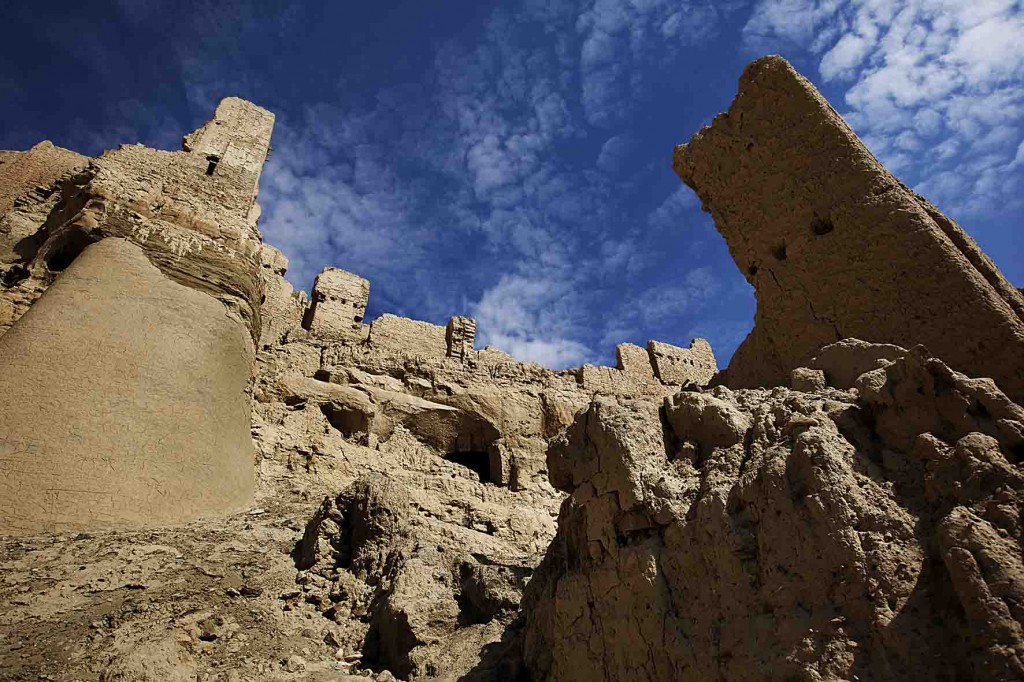
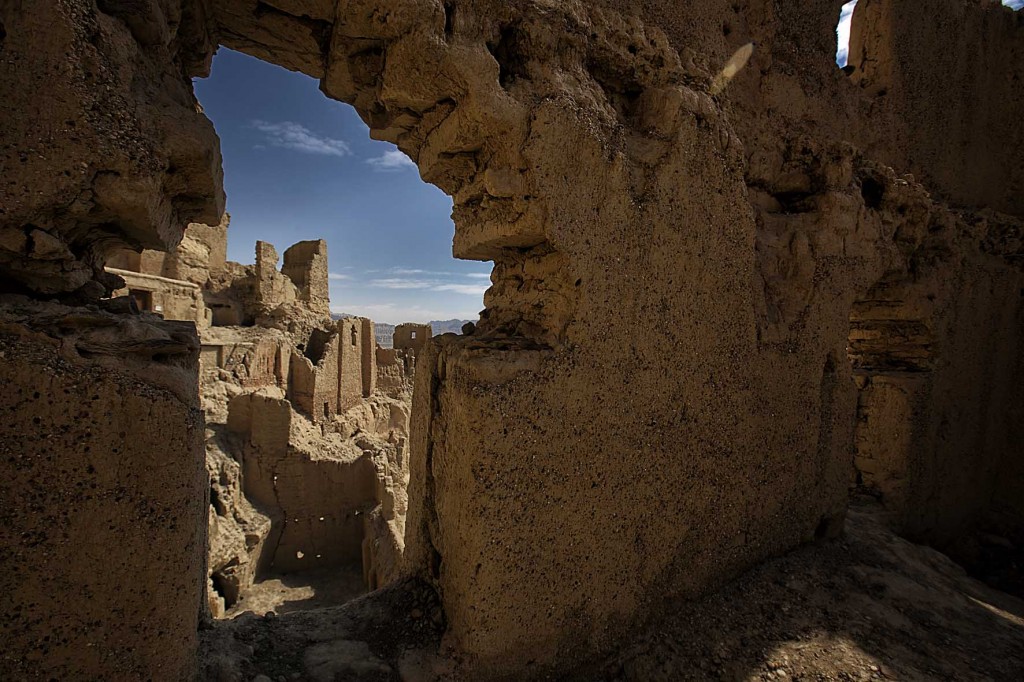
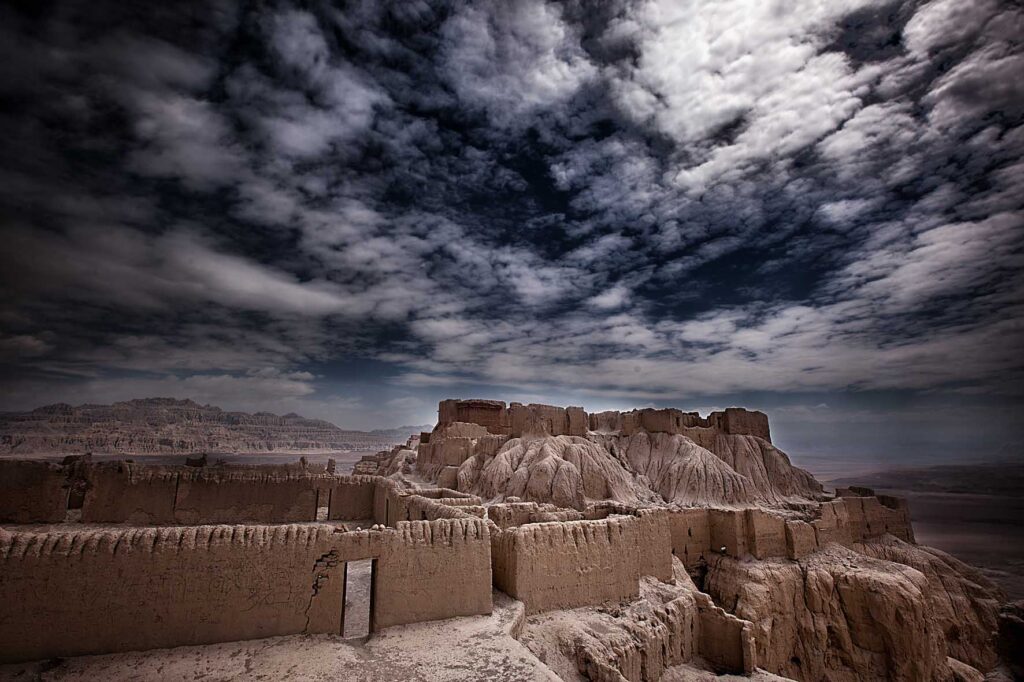
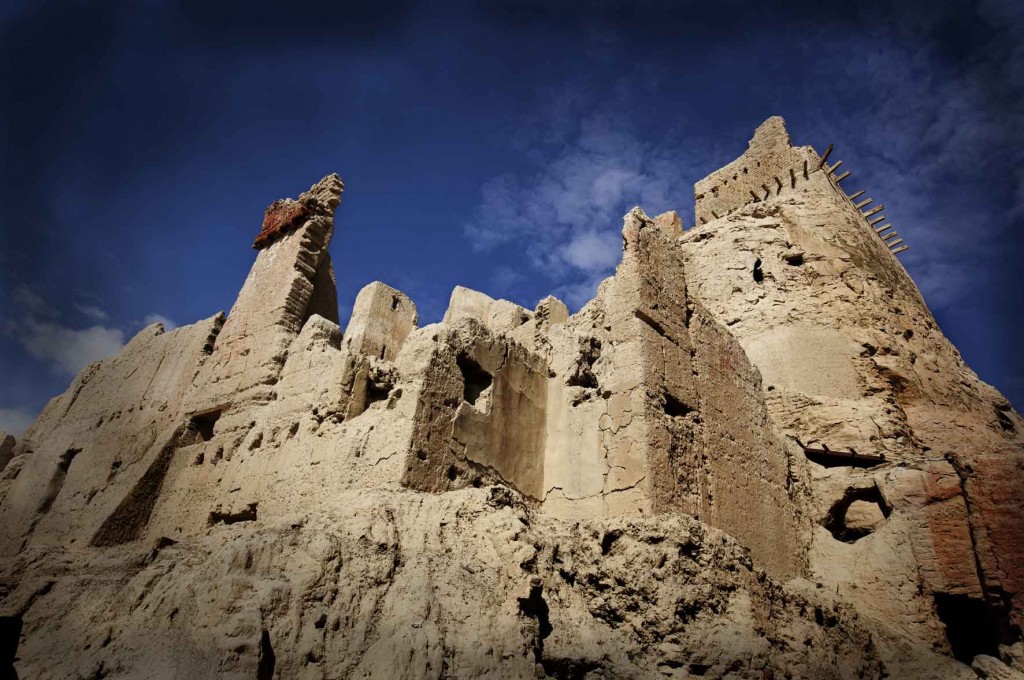
Pictures : Upper layers of the Tsaparang residences, overlooking the Sutlej river valley.

Comments(21)
Arun Sikka says:
May 10, 2013 at 8:01 PMwonderful story behind these arresting photographs
Hardev says:
May 21, 2013 at 12:31 PMYour spirit of adventure as seen from your photography and write-ups is amazing. Am I right to assume that unlike the Arabs and Europeans of earlier period, the Indians generally stepped little out of the confines of mountains in the north and the sea in the south. Guru Nanak stands out as a great adventurer of his time.
Ritu Sharma says:
February 11, 2015 at 11:49 PMAmardeep, your shots are consistently mesmerizing , yet soulful! And the write ups so vividly portraying the settings…,and the historical past seems so familiar….almost like living it !
Baba Ji says:
February 12, 2015 at 12:29 AMVeer ji tussi grate maza aa gia mera khawab aay ji kaday aay thawan zarur daikhan ga zarur bohat wadhia research aay tay photography day tay tussi ustad aay Rab sohna Mehar karay sab tay .
mpsjolly says:
February 12, 2015 at 1:01 AMAmazing historical encyclopedia. Is there a way to preserve these historical properties for future generations.
Marc says:
February 12, 2015 at 1:12 AMStunning photos.
While it seems that the level of conflict between civilizations has increased in recent years, the story is a reminder that hostilities between peoples is age old.
While that’s a depressing thought, the beauty depicted in the photos is a reminder that there’s always hope.
Thanks for sharing Amardeep.
Moninder Singh Modgil says:
February 12, 2015 at 2:20 AMAbsolutely Great!
Hardeep Singh Matharu says:
February 12, 2015 at 10:00 AMYour photos & narration always give a feeling of ‘Being there,seen all’.
Amarjeet Singh says:
February 12, 2015 at 10:01 AMyou are unique…..amar deep ji.
Troy Harris says:
February 12, 2015 at 10:01 AMWould climate change have helped a surviving kingdom?
Tsaparang and the Guge kingdom were later conquered in 1679–80 by the Lhasa-based Central Tibetan government under the leadership of a 5th Dalai Lama, driving out the Ladakhis.
Satsangi n p says:
February 12, 2015 at 11:18 AMoutstanding as usual
Karamjeet Singh says:
February 12, 2015 at 1:32 PMAmardeep! Your travels to remote habitations are really enlightening.This remote Guge Kingdom would’nt have been known untill these pictures.Sad to see the ruins and the history behind it.Thanks for exposing us all with valuable information.Good luck and good going!!!
Manjit Kour says:
February 12, 2015 at 1:45 PMRiveting. Truly an adventure.
dipikasen says:
February 12, 2015 at 5:12 PMWhat an interesting story!!!!
I think the same phenomenon is still happening in the world….dispute regarding religion is still destroying civilization.
Hats off to you and your daughter for taking up the trip.
Please keep it up.
kishore kumar biswas says:
February 15, 2015 at 11:06 PMFascinating History . Amazing beauty of nature.This pictorial feature tells us how vivid is the human history.It is also a amazing fact how the ancient people find most secluded corner to live a peaceful life.It is difficult to imagine how in those days people reach there . It speaks of indomitable spirit of human being.
Amardeep you are an amazing person who with a spiritual thought within roaming in the world to seek the beauty and soul of the human history.
We the friends of yours are proud of you. Regards to you.
Upinder Kaur says:
February 16, 2015 at 9:24 PMWow!You & your daughter are really lucky to have a chance to visit this beautiful place with such an interesting history.What a great adveture!
mustafa says:
February 17, 2015 at 5:48 PMSurreal.
Real.
The difference.
Your eye.
Surupa Chatterjee says:
February 20, 2015 at 5:37 PMStunning and stark and heady and serene is all that came to mind.
Ratna Shakya says:
May 16, 2016 at 12:37 AMNice page and great pictures. May I suggest a correction? In your mention of the Jesuits, you have confused the Jesuit search for the “Kingdom of Prester John” with much, much later tales that Jesus survived the crucifixion and spent the rest of his life in Kashmir, etc. There were Nestorian Christians who migrated eastward into China, presumably through Tibet. This is what helped fuel the European legends of a Christian priest-king in Cathay. Basically a wonderful historical mash-up. But Andrade and Marques certainly didn’t go to find the place where Jesus lived after his thwarted execution. That would be contradictory to the most fundamental tenets of their faith.
Sundar says:
June 4, 2019 at 2:05 PMincredible History . and You are such a Great Knowledgeable I have ever seen Before.
Sherill St oner says:
December 27, 2021 at 5:24 AMIn a comment abut t he mystery beh9nd the disappearance of the Guge civilizat on, some one ment ions also the sudden decline of the Maya Civilization in Central America. They state THE CIVIFLIZATION WAS IN SOUTH aMERICA. THAT IS NOT TRUE; IT ISS RATHER LOCATEDE IN MESOAMERICA (MIDDLE America).